
Health of your Home
The health of your home can impact the health of your family. That’s why it really benefits to understand the importance of indoor air and how it affects your home environment and ultimately, your health. It’s not something we pay much attention to day-to-day but our homes can become up to 50x more polluted than outside.

Indoor pollution can be affected by both internal and external factors. Understanding what these factors are, and their effects on our health and home, will help determine the correct course of action and the right type of ventilation or service for you.
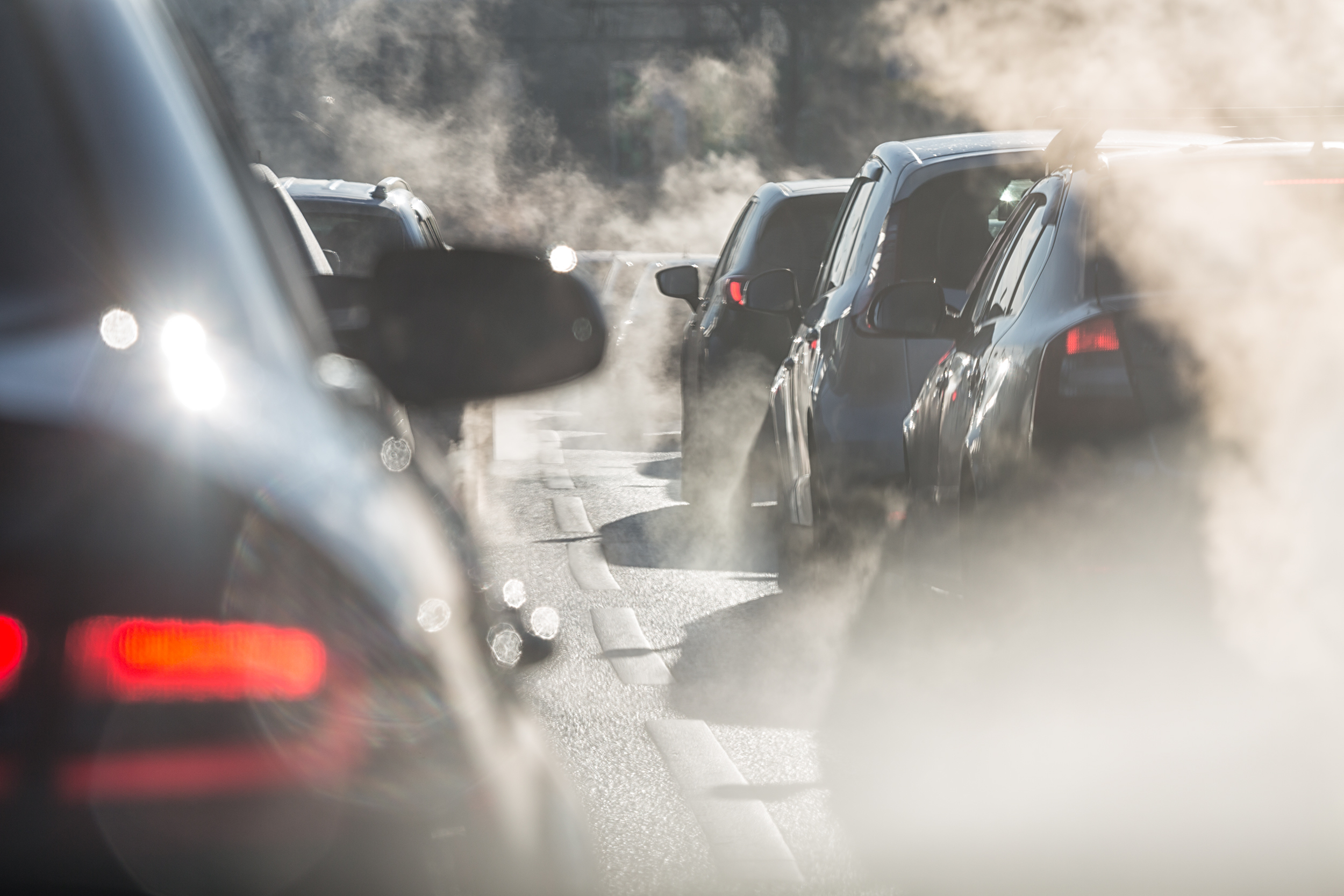
Outdoor air pollution
Poor air impacts thousands of lives every year; in fact UK air pollution could cause 36,000 deaths a year according to a report by King's College London. This polluted outdoor air gets into the home and causes poor indoor air quality which may affect your health. However, there is a solution to prevent poor outdoor air getting in and making your indoor air unhealthy. Our discreet range of positive input ventilation (PIV) systems provide whole-house ventilation and can be easily be retrofitted into a loft or onto a wall and, with optional high grade filters, give protection from outdoor pollutants. If your home suffers from outdoor air pollution, for example if you live near a busy road, a PIV system can provide the answer.
Download your indoor air quality factsheet >What is positive input ventilation (PIV)? >Find out more about your choice of ventilation products for a healthier home >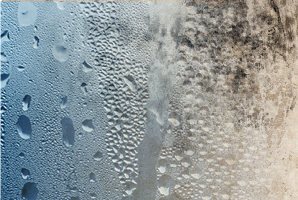
Condensation and mould
Everyday activities such as bathing, cooking, showering and even breathing generate moisture in the home which can lead to mould growth. Condensation is formed when moisture stored in the air (such as mist from a shower) meets a cold surface (such as a mirror or cold exterior wall). When it meets a cold surface, the air releases its moisture and leaves it behind; this is condensation and it is a key factor in mould growth. Mould growth appears on any damp surfaces such as plaster, wallpaper and timber. Food (dust), moisture and oxygen are all it needs to grow. Effective ventilation can extract the moisture before it forms condensation.
Download your free guide to condensation and mould >Find out more about condensation & mould >Find out more about your choice of ventilation products for a healthier home >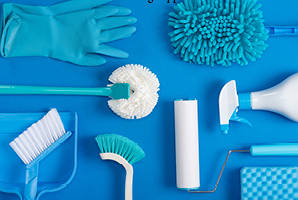
Cleaning supplies
Everyday cleaning products can pollute the air in your home. Products in your home can emit airborne compounds, known as VOC’s (Volatile Organic Compounds). They are an irritant to our bodies and contribute to conditions such as asthma and eczema. In severe cases VOC’s can even be linked to cancer. Chemicals such as Acetaldehyde, Benzene, and Formaldehyde are just some of the chemical compounds found in the home and can be found in common household products like air fresheners, washing detergents, polish and oven cleaners. A build-up of these pollutants in the air can cause ill health and is known as Toxic Home Syndrome. Without ventilation these pollutants could build up in the air in your home.
Watch the My Healthy My Home video on indoor air quality >Find out more about your choice of ventilation products for a healthier home >
Dust mites
Dust mites are microscopic insects who feed from dust in our homes. They release allergens which can cause unpleasant symptoms. Homes with mould and/ or pets are at a greater risk of having dust mites. Mouldy household furnishings make perfect living conditions for dust mites to feed on as well as dead skin from both people and animals. Although dust mites cannot be easily seen, certain symptoms might also indicate that they are present in the home. These can include breathing difficulties particularly if you suffer from asthma as well as skin irritation.
Find out more about your choice of ventilation products for a healthier home >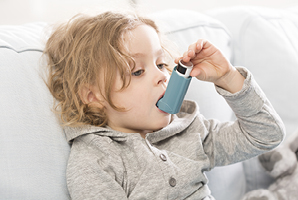
Toxic home syndrome
As well as potentially damaging the fabric of the building itself, a lack of proper ventilation can lead to a build-up of contaminants that have a detrimental effect on your health. Toxic Home Syndrome occurs when individuals and families are exposed to a potent mix of airborne pollutants within the home arising from either no ventilation or poorly maintained ventilation, causing respiratory problems and skin diseases to occur more frequently. A well-designed and maintained ventilation system replaces contaminants with clean fresh air.
Find out more about symptoms of poor indoor air quality >Find out more about ventilation maintenance and servicing >Find out more about your choice of ventilation products for a healthier home >
Airtight buildings
In a bid to make existing properties more efficient and lower energy bills, steps are taken to improve the airtightness of a building, these might include cavity wall or loft insulation and triple glazing, but this then means the home cannot breathe and moisture-laden and polluted air can’t escape creating an unhealthy environment. The Lo-Carbon Tempra is an energy efficient single room extraction fan which can recover heat from the stale air being extracted and warms up the fresh air that is coming in. This energy efficient solution helps an airtight building retain its energy efficiency whilst improving indoor air quality.
Find out more about the single room heat-recovery >Find out more about Energy Efficiency >Find out more about your choice of ventilation products for a energy efficient home >There are multiple ways to improve the quality of our indoor air and this is not necessarily just by opening the window. This is because there will be multiple reasons for poor indoor air and outdoor pollution could be one of them! Ensuring your home is fitted with a filtered ventilation unit will protect your home from outdoor nasties like pollen and diesel particulates. See our advice below for more ways to improve your indoor environment.
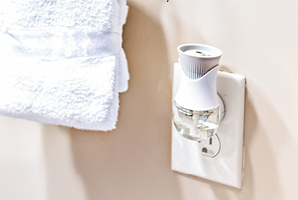
Source control
There are positive changes you can make to help reduce build-up of condensation and indoor pollution. Prevention is always better than a cure and the following tips will help; ensure your home is properly heated, open windows when safe to do so, dry clothes outdoors or in a vented dryer, use saucepan lids when cooking, check over your home for leaks in the plumbing, avoid using air fresheners and aerosols and never turn off your extractor fan. A good ventilation system will keep the air in your home refreshed and healthier to breathe.
Download your free checklist to reduce condensation and mould >Find out more about your choice of ventilation products for a healthier home >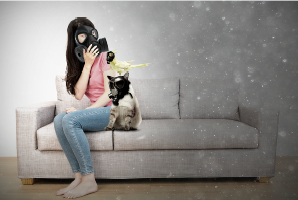
Air filtration
Indoor air may contain over 900 chemicals, particles and biological materials with potential harmful health effects. Ventilation systems with air filtration ensure our indoor environment remains healthy all year-round resulting in a healthy home. Fresh air is a critical component for a healthy home especially if you have an underlying condition like asthma or suffer with allergies. A constant supply of filtered fresh air in the home will keep every part of the house condensation-free, control irritating pollutants and improve your indoor comfort which in turn has a positive impact on health. Our positive input ventilation (PIV) products can be easily retrofitted and offer air filtration down to PM2.5 – which includes small particulates such as those from diesel fumes.
What is positive input ventialtion (PIV)? >Find out more about your choice of ventilation products for a healthier home >
Adequate ventilation
Compliance with Part F building regulations set out by the government is the minimum requirement stipulated for adequate ventilation. For example a typical bathroom will require a minimum extract of 15l/s from an intermittent ventilation unit, however this does not take into account a busy household with varying ventilation needs. The Silent Fan, intermittent model can silently improve indoor air quality by extracting up to 27l/s, giving peace of mind that when it comes building regulations, not only are you more than covered, you can also rest assured your fan will be working efficiently to meet your households varying needs. As a whole-house ventilation option for a 3 bedroom family home the PureAir Home can achieve the required 21l/s even on its slowest speed.
To find out more about the minimum extraction rate requirements from Part F building regulations, click here >Find out more about your choice of ventilation products for a healthier home >Ensure that your fans are switched on and doing their job. As well as keeping your indoor air cleaner, a correctly fitted and well maintained unit should not disturb either, leaving you free to concentrate on the more important things.
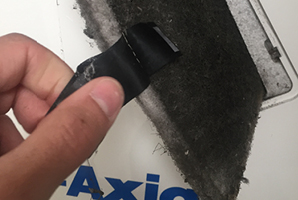
Ventilation system maintenance
It is important to maintain your ventilation system in order for it to keep providing the household with good indoor air quality. Our ventilation units are designed to keep maintenance levels to a minimum. The benefits of servicing your unit includes; breathing cleaner air, longer product life, lower running costs and a quieter running unit. For our whole house units we recommend a full service every 2 years with filter changes required every 3-6 months in between. For our smaller units we recommend periodically checking the fan is free of any dust/dirt/grease build up using a damp cloth with warm water and a mild detergent. Make sure that the fan is switched off at the mains before carrying out any form of cleaning maintenance yourself.
Buy filters >Book a service >For prices and more information download our servicing leaflet >Visit servicing and maintenance for more info >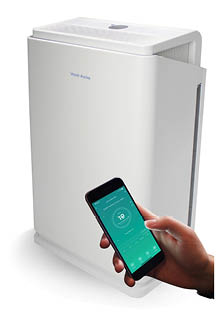
Air Purifiers
An air purifier or air cleaner is a device which removes contaminants from the air in a room and makes the air inside healthier to breathe. Air purifiers clean the air that you breath and work in conjunction with a good ventilation strategy to reduce the chances of health issues caused by indoor pollutants, which can trigger respiratory infections or aggravate symptoms in asthma sufferers. A ‘High-Efficiency Particulate Air’ (HEPA) filter can remove up to 99.7% of particles in the air including PM2.5. Particulate matter (PM) is a term used to describe the mixture of solid particles and liquid droplets in the air. It can be either human-made or naturally occurring such as pet allergens, pollen, viruses, mould and bacteria. The filter system of an air purifier can trap these materials and remove them from the air providing a healthier breathing space in your home. Quality air purifiers can eliminate several types of indoor air pollutants, helping to control the indoor air quality at home and keeping you healthy.
Find out more. >Visit PureAir Room X >What is Particulate Matter? >Indoor pollution can be affected by both internal and external factors. Understanding what these factors are, and their effects on our health and home, will help determine the correct course of action and the right type of ventilation or service for you.

Outdoor air pollution
Poor air impacts thousands of lives every year; in fact UK air pollution could cause 36,000 deaths a year according to a report by King's College London. This polluted outdoor air gets into the home and causes poor indoor air quality which may affect your health. However, there is a solution to prevent poor outdoor air getting in and making your indoor air unhealthy. Our discreet range of positive input ventilation (PIV) systems provide whole-house ventilation and can be easily be retrofitted into a loft or onto a wall and, with optional high grade filters, give protection from outdoor pollutants. If your home suffers from outdoor air pollution, for example if you live near a busy road, a PIV system can provide the answer.
Download your indoor air quality factsheet >What is positive input ventilation (PIV)? >Find out more about your choice of ventilation products for a healthier home >
Condensation and mould
Everyday activities such as bathing, cooking, showering and even breathing generate moisture in the home which can lead to mould growth. Condensation is formed when moisture stored in the air (such as mist from a shower) meets a cold surface (such as a mirror or cold exterior wall). When it meets a cold surface, the air releases its moisture and leaves it behind; this is condensation and it is a key factor in mould growth. Mould growth appears on any damp surfaces such as plaster, wallpaper and timber. Food (dust), moisture and oxygen are all it needs to grow. Effective ventilation can extract the moisture before it forms condensation.
Download your free guide to condensation and mould >Find out more about condensation & mould >Find out more about your choice of ventilation products for a healthier home >
Cleaning supplies
Everyday cleaning products can pollute the air in your home. Products in your home can emit airborne compounds, known as VOC’s (Volatile Organic Compounds). They are an irritant to our bodies and contribute to conditions such as asthma and eczema. In severe cases VOC’s can even be linked to cancer. Chemicals such as Acetaldehyde, Benzene, and Formaldehyde are just some of the chemical compounds found in the home and can be found in common household products like air fresheners, washing detergents, polish and oven cleaners. A build-up of these pollutants in the air can cause ill health and is known as Toxic Home Syndrome. Without ventilation these pollutants could build up in the air in your home.
Watch the My Healthy My Home video on indoor air quality >Find out more about your choice of ventilation products for a healthier home >
Dust mites
Dust mites are microscopic insects who feed from dust in our homes. They release allergens which can cause unpleasant symptoms. Homes with mould and/ or pets are at a greater risk of having dust mites. Mouldy household furnishings make perfect living conditions for dust mites to feed on as well as dead skin from both people and animals. Although dust mites cannot be easily seen, certain symptoms might also indicate that they are present in the home. These can include breathing difficulties particularly if you suffer from asthma as well as skin irritation.
Find out more about your choice of ventilation products for a healthier home >
Toxic home syndrome
As well as potentially damaging the fabric of the building itself, a lack of proper ventilation can lead to a build-up of contaminants that have a detrimental effect on your health. Toxic Home Syndrome occurs when individuals and families are exposed to a potent mix of airborne pollutants within the home arising from either no ventilation or poorly maintained ventilation, causing respiratory problems and skin diseases to occur more frequently. A well-designed and maintained ventilation system replaces contaminants with clean fresh air.
Find out more about symptoms of poor indoor air quality >Find out more about ventilation maintenance and servicing >Find out more about your choice of ventilation products for a healthier home >
Airtight buildings
In a bid to make existing properties more efficient and lower energy bills, steps are taken to improve the airtightness of a building, these might include cavity wall or loft insulation and triple glazing, but this then means the home cannot breathe and moisture-laden and polluted air can’t escape creating an unhealthy environment. The Lo-Carbon Tempra is an energy efficient single room extraction fan which can recover heat from the stale air being extracted and warms up the fresh air that is coming in. This energy efficient solution helps an airtight building retain its energy efficiency whilst improving indoor air quality.
Find out more about the single room heat-recovery >Find out more about Energy Efficiency >Find out more about your choice of ventilation products for a energy efficient home >There are multiple ways to improve the quality of our indoor air and this is not necessarily just by opening the window. This is because there will be multiple reasons for poor indoor air and outdoor pollution could be one of them! Ensuring your home is fitted with a filtered ventilation unit will protect your home from outdoor nasties like pollen and diesel particulates. See our advice below for more ways to improve your indoor environment.

Source control
There are positive changes you can make to help reduce build-up of condensation and indoor pollution. Prevention is always better than a cure and the following tips will help; ensure your home is properly heated, open windows when safe to do so, dry clothes outdoors or in a vented dryer, use saucepan lids when cooking, check over your home for leaks in the plumbing, avoid using air fresheners and aerosols and never turn off your extractor fan. A good ventilation system will keep the air in your home refreshed and healthier to breathe.
Download your free checklist to reduce condensation and mould >Find out more about your choice of ventilation products for a healthier home >
Air filtration
Indoor air may contain over 900 chemicals, particles and biological materials with potential harmful health effects. Ventilation systems with air filtration ensure our indoor environment remains healthy all year-round resulting in a healthy home. Fresh air is a critical component for a healthy home especially if you have an underlying condition like asthma or suffer with allergies. A constant supply of filtered fresh air in the home will keep every part of the house condensation-free, control irritating pollutants and improve your indoor comfort which in turn has a positive impact on health. Our positive input ventilation (PIV) products can be easily retrofitted and offer air filtration down to PM2.5 – which includes small particulates such as those from diesel fumes.
What is positive input ventialtion (PIV)? >Find out more about your choice of ventilation products for a healthier home >
Adequate ventilation
Compliance with Part F building regulations set out by the government is the minimum requirement stipulated for adequate ventilation. For example a typical bathroom will require a minimum extract of 15l/s from an intermittent ventilation unit, however this does not take into account a busy household with varying ventilation needs. The Silent Fan, intermittent model can silently improve indoor air quality by extracting up to 27l/s, giving peace of mind that when it comes building regulations, not only are you more than covered, you can also rest assured your fan will be working efficiently to meet your households varying needs. As a whole-house ventilation option for a 3 bedroom family home the PureAir Home can achieve the required 21l/s even on its slowest speed.
To find out more about the minimum extraction rate requirements from Part F building regulations, click here >Find out more about your choice of ventilation products for a healthier home >Ensure that your fans are switched on and doing their job. As well as keeping your indoor air cleaner, a correctly fitted and well maintained unit should not disturb either, leaving you free to concentrate on the more important things.

Ventilation system maintenance
It is important to maintain your ventilation system in order for it to keep providing the household with good indoor air quality. Our ventilation units are designed to keep maintenance levels to a minimum. The benefits of servicing your unit includes; breathing cleaner air, longer product life, lower running costs and a quieter running unit. For our whole house units we recommend a full service every 2 years with filter changes required every 3-6 months in between. For our smaller units we recommend periodically checking the fan is free of any dust/dirt/grease build up using a damp cloth with warm water and a mild detergent. Make sure that the fan is switched off at the mains before carrying out any form of cleaning maintenance yourself.
Buy filters >Book a service >For prices and more information download our servicing leaflet >Visit servicing and maintenance for more info >
Air Purifiers
An air purifier or air cleaner is a device which removes contaminants from the air in a room and makes the air inside healthier to breathe. Air purifiers clean the air that you breath and work in conjunction with a good ventilation strategy to reduce the chances of health issues caused by indoor pollutants, which can trigger respiratory infections or aggravate symptoms in asthma sufferers. A ‘High-Efficiency Particulate Air’ (HEPA) filter can remove up to 99.7% of particles in the air including PM2.5. Particulate matter (PM) is a term used to describe the mixture of solid particles and liquid droplets in the air. It can be either human-made or naturally occurring such as pet allergens, pollen, viruses, mould and bacteria. The filter system of an air purifier can trap these materials and remove them from the air providing a healthier breathing space in your home. Quality air purifiers can eliminate several types of indoor air pollutants, helping to control the indoor air quality at home and keeping you healthy.
Find out more. >Visit PureAir Room X >What is Particulate Matter? >